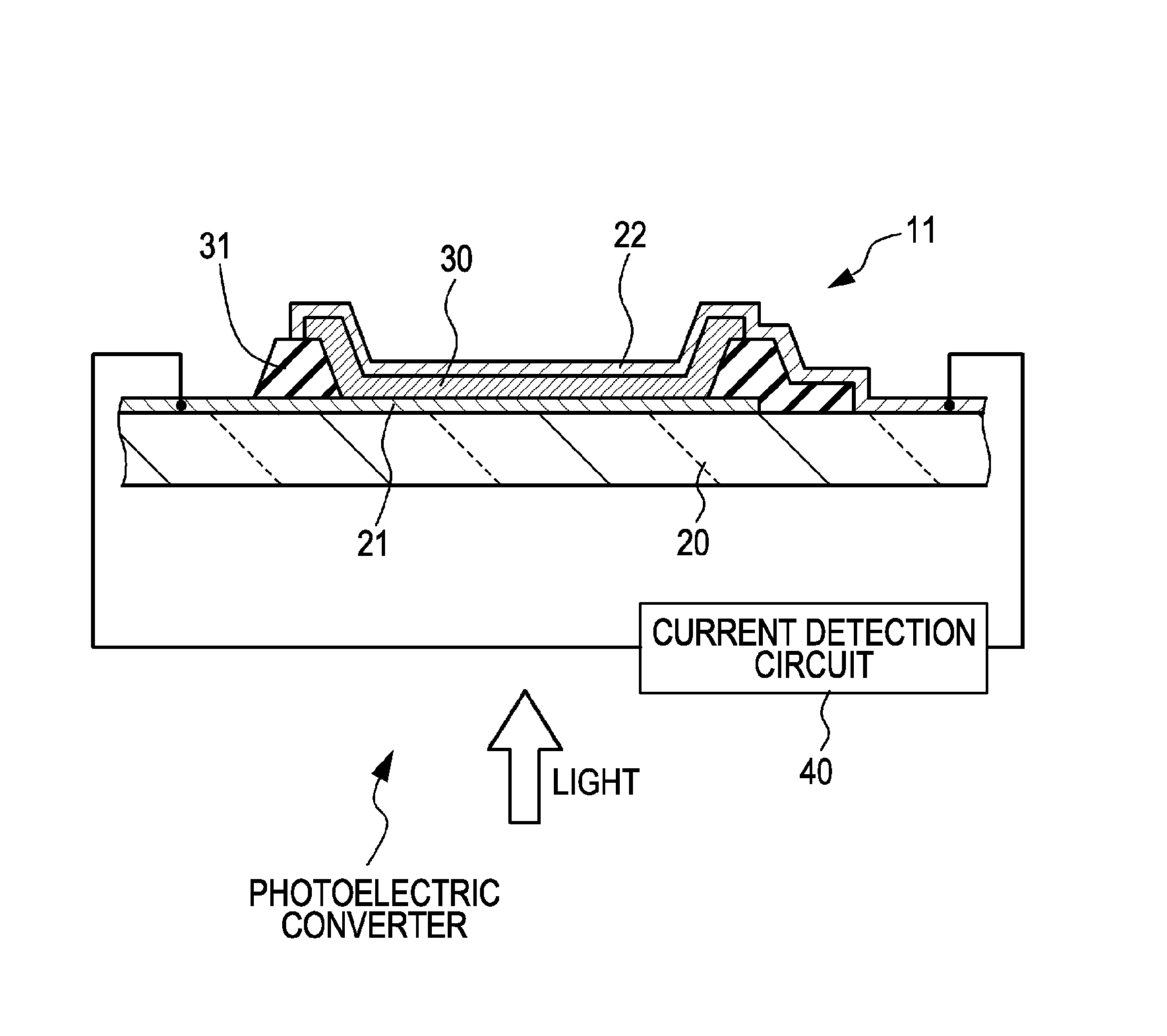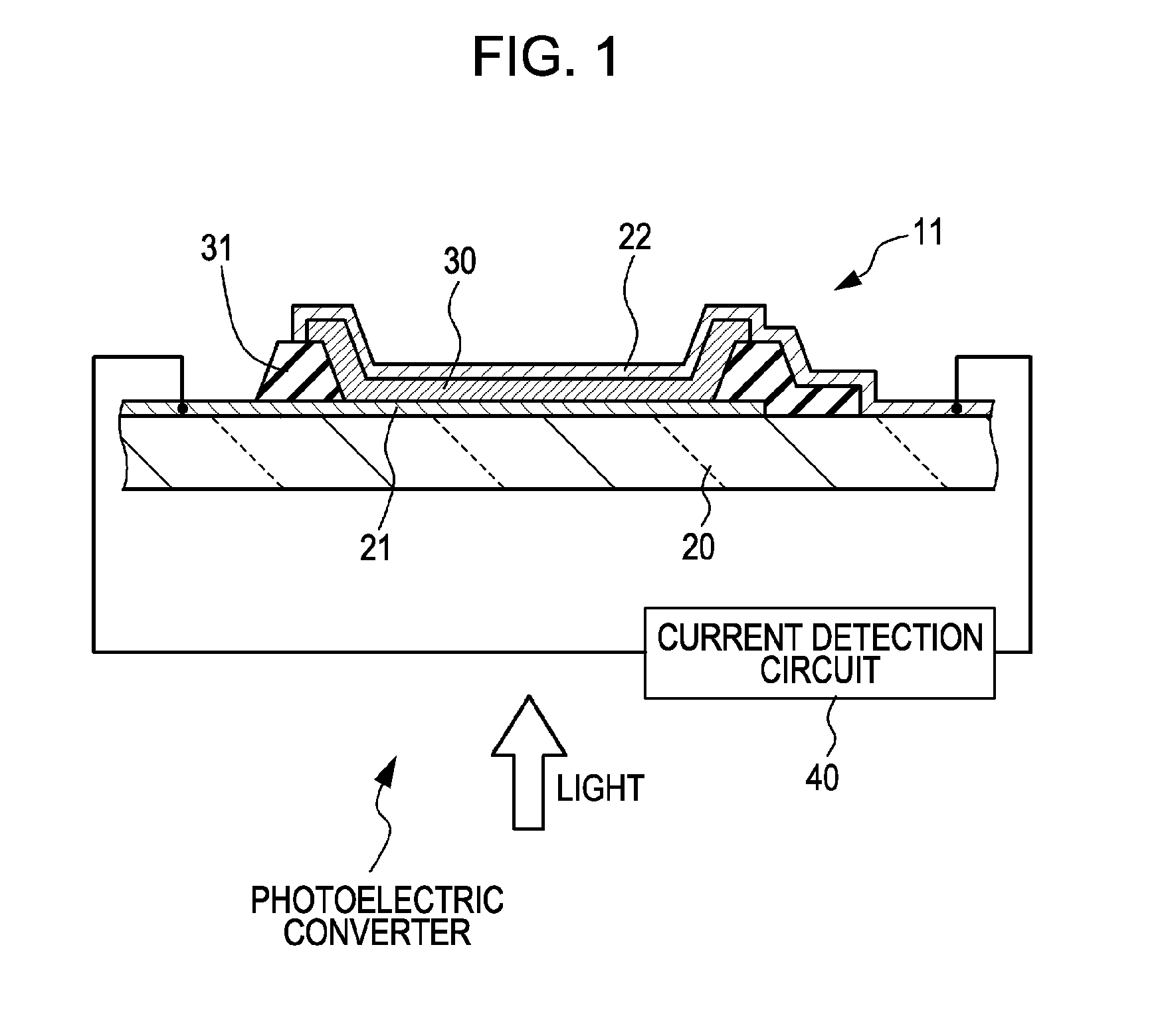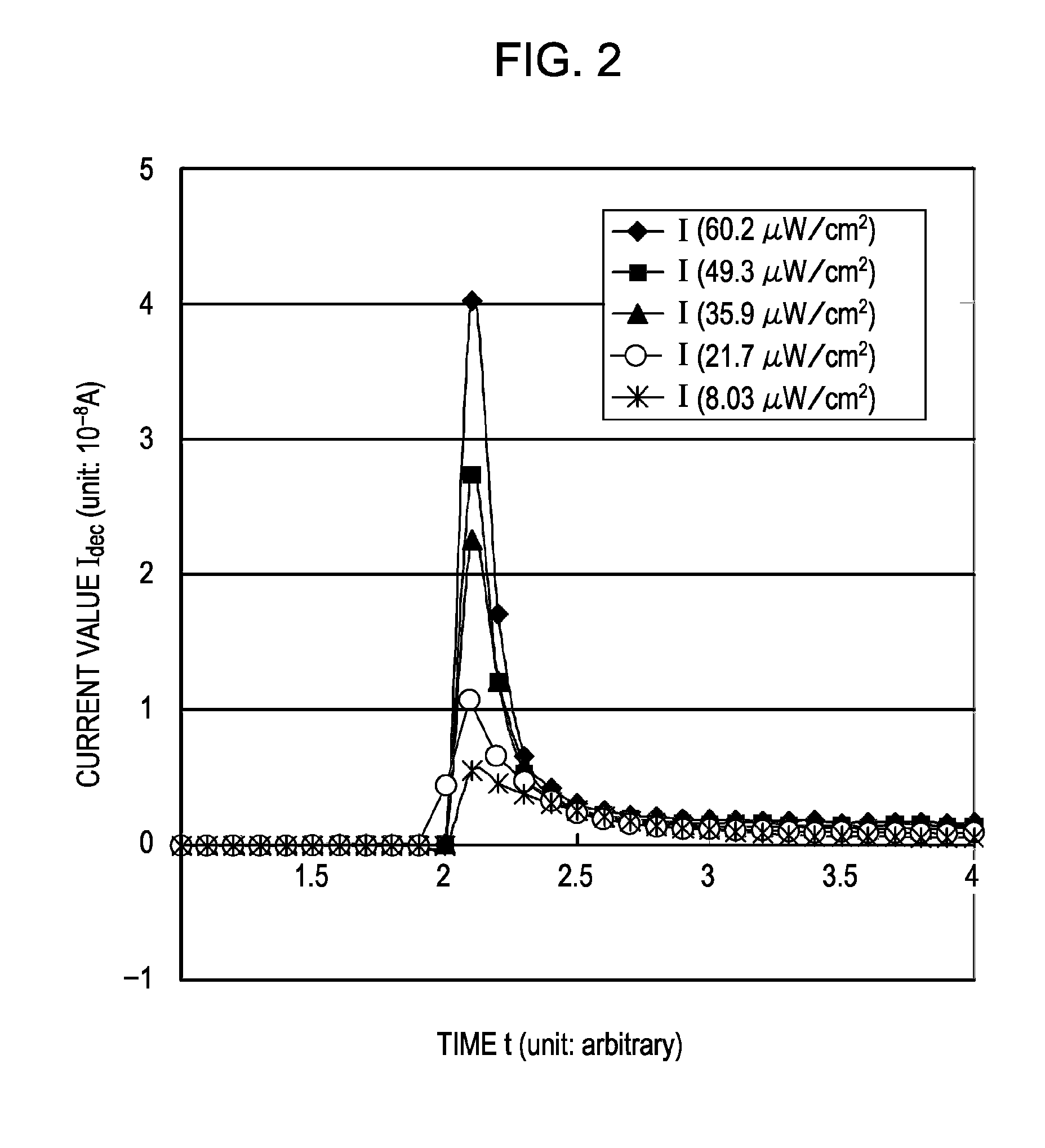Photoelectric converter and photoelectric conversion element
a conversion element and photoelectric technology, applied in the direction of photometry using electric radiation detectors, instruments, radioation controlled devices, etc., can solve the problems of low sensitivity and low s/n ratio, and achieve high sensitivity and high s/n ratio
- Summary
- Abstract
- Description
- Claims
- Application Information
AI Technical Summary
Benefits of technology
Problems solved by technology
Method used
Image
Examples
example 1
[0070]Example 1 relate to a photoelectric converter and a photoelectric conversion element according to embodiments of the present invention. In particular, the photoelectric conversion element in Example 1 is a first configuration photoelectric conversion element. As is indicated by a schematic sectional view shown in FIG. 1, a photoelectric conversion element 11 in Example 1 includes (A) a first electrode 21 and a second electrode 22 disposed discretely and (B) a photoelectric conversion material layer 30 disposed between the first electrode 21 and the second electrode 22. Furthermore, a photoelectric converter in Example 1 includes the photoelectric conversion element 11 and, in addition, includes a current detection circuit 40.
[0071]Then, in the photoelectric conversion element 11 in Example 1 or in the photoelectric conversion element 11 constituting the photoelectric converter in Example 1, when a constant amount of light is applied to the photoelectric conversion material lay...
example 2
[0081]Example 2 is a modification of Example 1. The photoelectric conversion element 12 in Example 2 is a second configuration photoelectric conversion element. That is, as is indicated by a schematic partial sectional view shown in FIG. 6A, a first electrode 21A is disposed on a substrate 20A, a photoelectric conversion material layer 30 is disposed on the first electrode 21A, and a second electrode 22A formed from a transparent material is disposed on the photoelectric conversion material layer 30. The light is incident on the photoelectric conversion material layer 30 through the second electrode 22A. Here, specifically, the substrate 20A is formed from, for example, a silicon semiconductor substrate, the first electrode 21A is formed from aluminum, and the second electrode 22A is formed from ITO. The configuration and the structure of the photoelectric conversion element 12 or a photoelectric converter in Example 2 may be the same configuration and structure as those of the phot...
example 3
[0082]Example 3 is also a modification of Example 1. The photoelectric conversion element 13 in Example 3 is a third configuration photoelectric conversion element. That is, as is indicated by a schematic partial sectional view shown in FIG. 6B, a first electrode 21B and a second electrode 22B are disposed on a substrate. A photoelectric conversion material layer 30 is disposed on the substrate 20B while extending from the first electrode 21B to the second electrode 22B. The light is incident on the photoelectric conversion material layer 30 through the second electrode 22B. Alternatively, the light is incident on the photoelectric conversion material layer 30 through the substrate 20B and the first electrode 21B. Here, specifically, the substrate 20B is formed from, for example, a silicon semiconductor substrate, the first electrode 21B and the second electrode 22B are formed from a metal material or a transparent electrically conductive material. The configuration and the structur...
PUM
 Login to View More
Login to View More Abstract
Description
Claims
Application Information
 Login to View More
Login to View More - R&D
- Intellectual Property
- Life Sciences
- Materials
- Tech Scout
- Unparalleled Data Quality
- Higher Quality Content
- 60% Fewer Hallucinations
Browse by: Latest US Patents, China's latest patents, Technical Efficacy Thesaurus, Application Domain, Technology Topic, Popular Technical Reports.
© 2025 PatSnap. All rights reserved.Legal|Privacy policy|Modern Slavery Act Transparency Statement|Sitemap|About US| Contact US: help@patsnap.com



